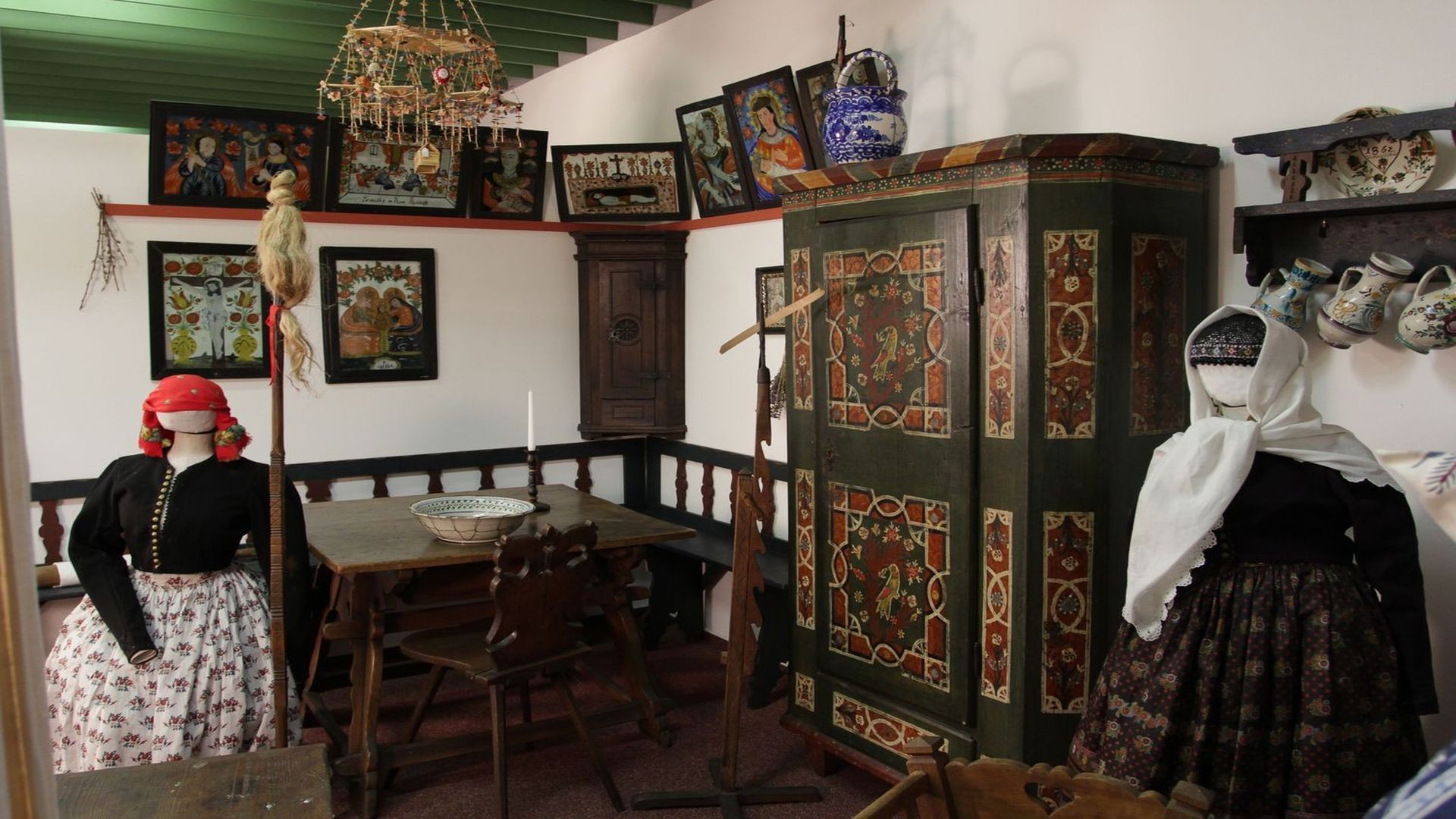Luhacovicke Zalesi Museum

Luhacovicke Zalesi Museum
Luhacovicke Zalesi Museum, part of the Regional Museum of Zlin, was founded in 1918 and recently celebrated the 100th anniversary. The initiator of its foundation and the main creator of the prized ethnographic collection was a local native ethnographer Antonin Vaclavik.
HISTORY
The Luhacovicke Zalesi Museum is based on Vaclavik’s collections and research. The museum is currently a part of the Museum of Southeast Moravia in the Zlin city. It is located on the ground floor of the Municipal Cultural House. The visitors may visit a permanent exhibition dedicated to the history of the place and the Luhacovice Spa, which is complemented by short-term exhibitions and varied a range of accompanying programs for the public.
The museum focuses on research and documentation of folk culture in the Luhacovice area Zalesi, an ethnographic region that includes 35 municipalities on the border of Wallachia, Slovacko and Hana.
EXHIBITION
During the exhibition the visitor can see examples of the way of life at the turn of the 19th and 20th centuries. Seen are rural household equipment, demonstrations of local costume, folk pottery, paintings on glass and folk wood carving.
Another part of the exhibition is devoted to the Luhacovice SPA and maps. The history demonstrates the important role of Luhacovice in shaping Czech-Slovak relations at the beginning of the 20th century. Dusan Jurkovic’s cabinet is dedicated to this important personality not only as an urban planner and architect of spa buildings, but also as a furniture designer and ethnographer. Jurkovic’s photographic documentation on the Moravian-Slovak border before The First World War, which are presented in the workbook, “The Work of Our People”. Luhacovicke Zalesi Museum’s exhibition and professional program focuses on topics related to the history of Luhacovice, their architecture, SPAs and important personalities.
The second line of exhibition themes is ethnographic: treasures from grandmother’s chest, old soil toys, masks, costumes and masquerades, Blue color in traditional culture and others).
For more information about the Zlin Region, from which this museum comes, click here and here.


